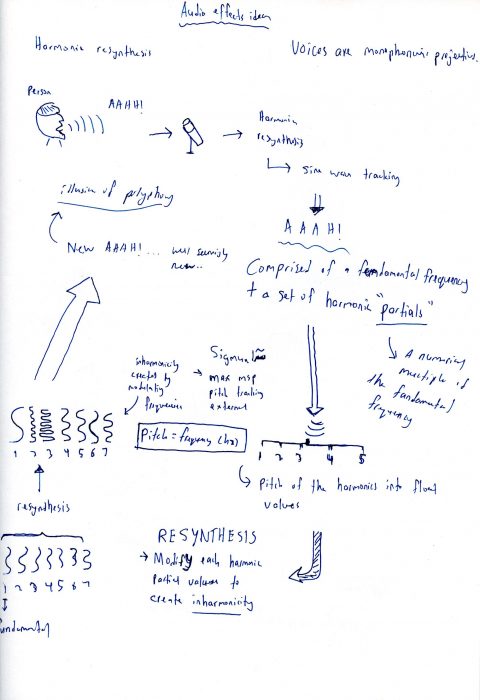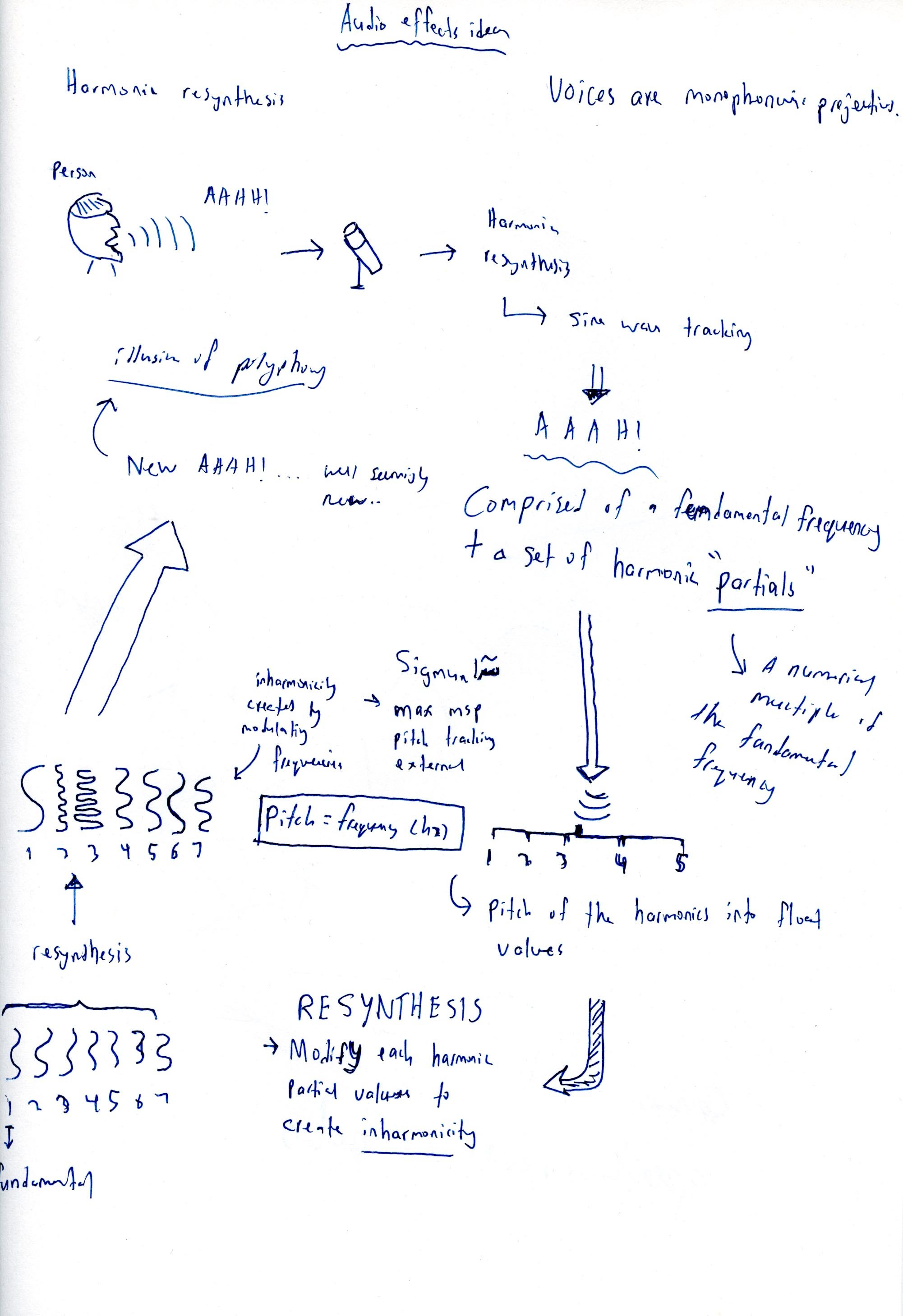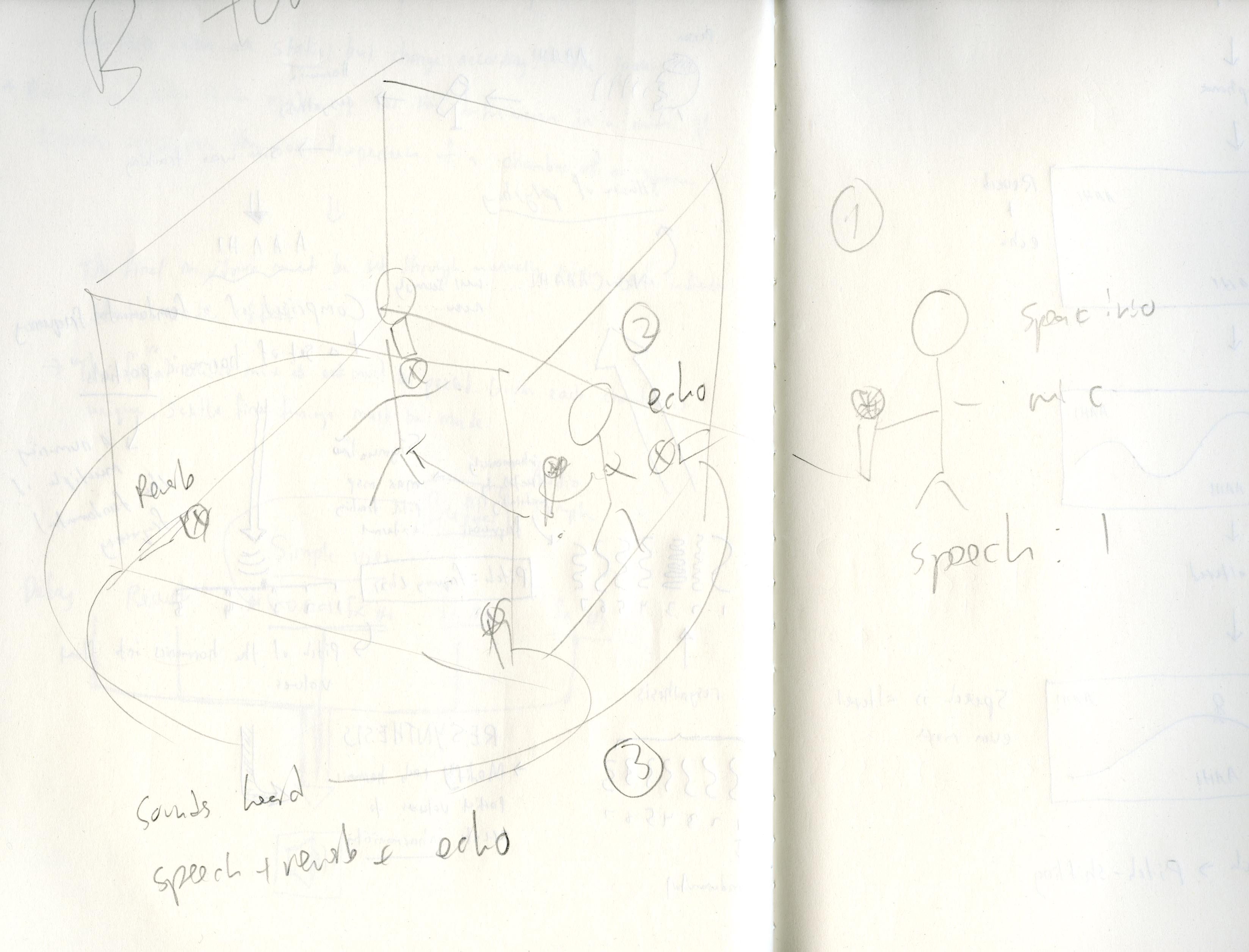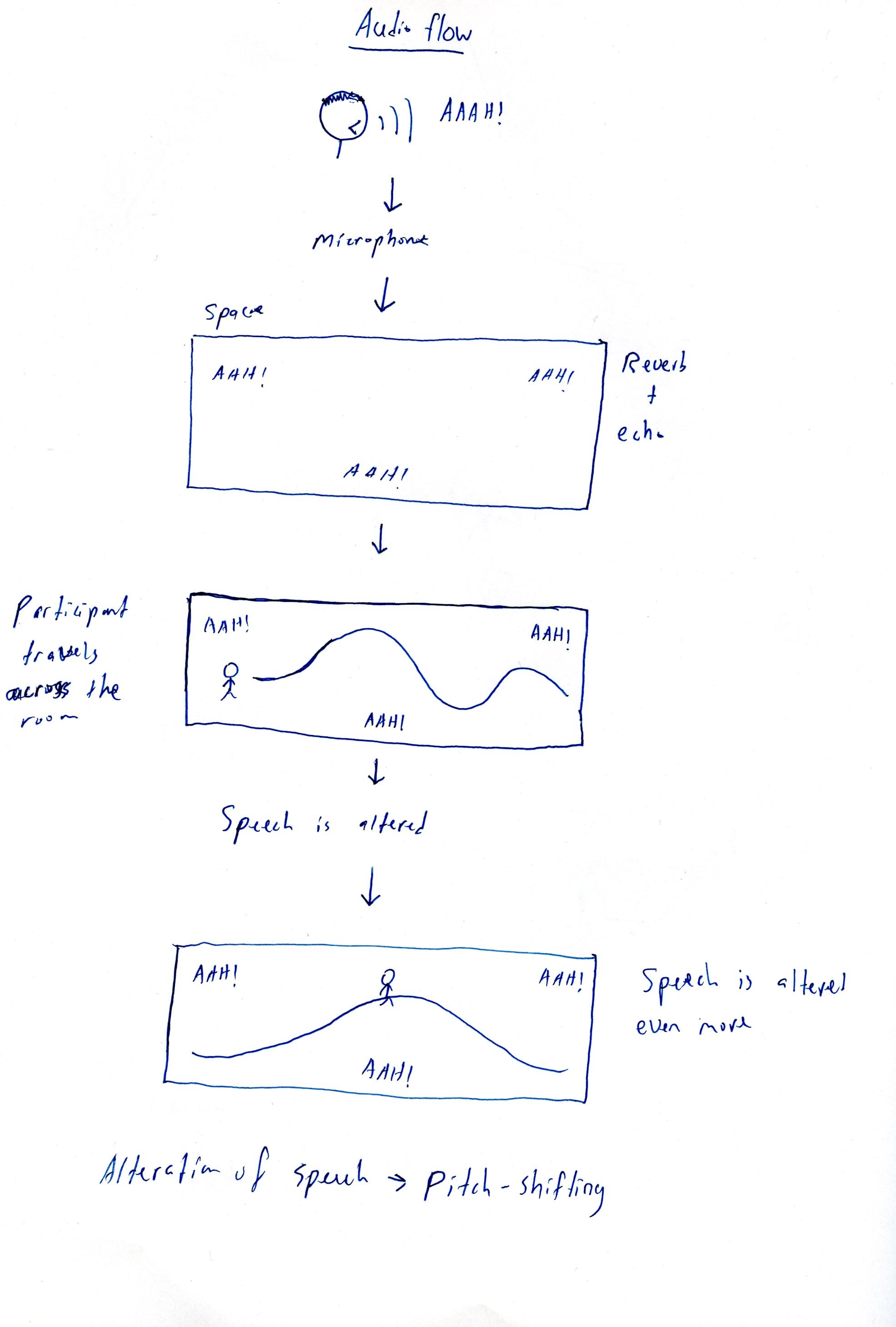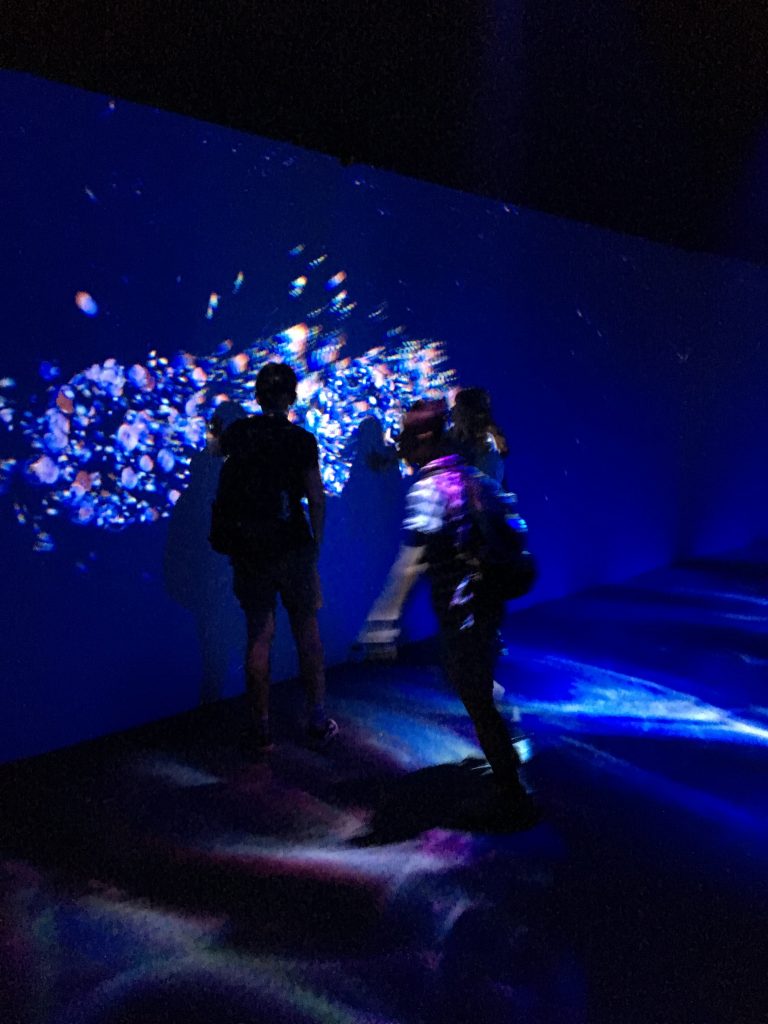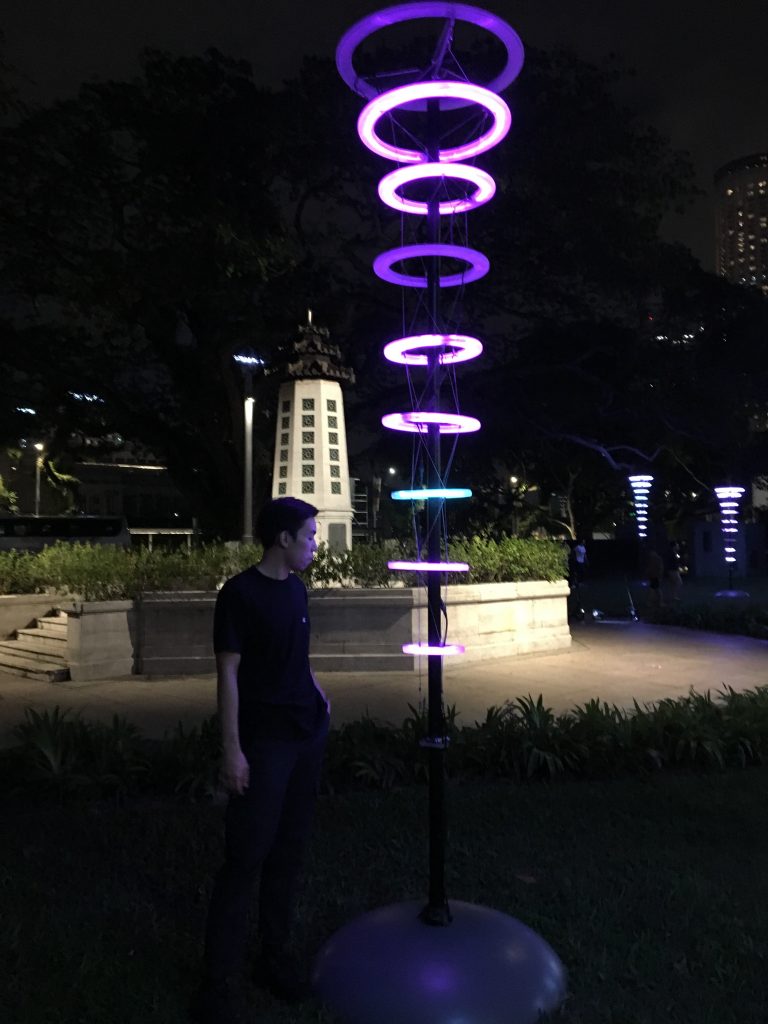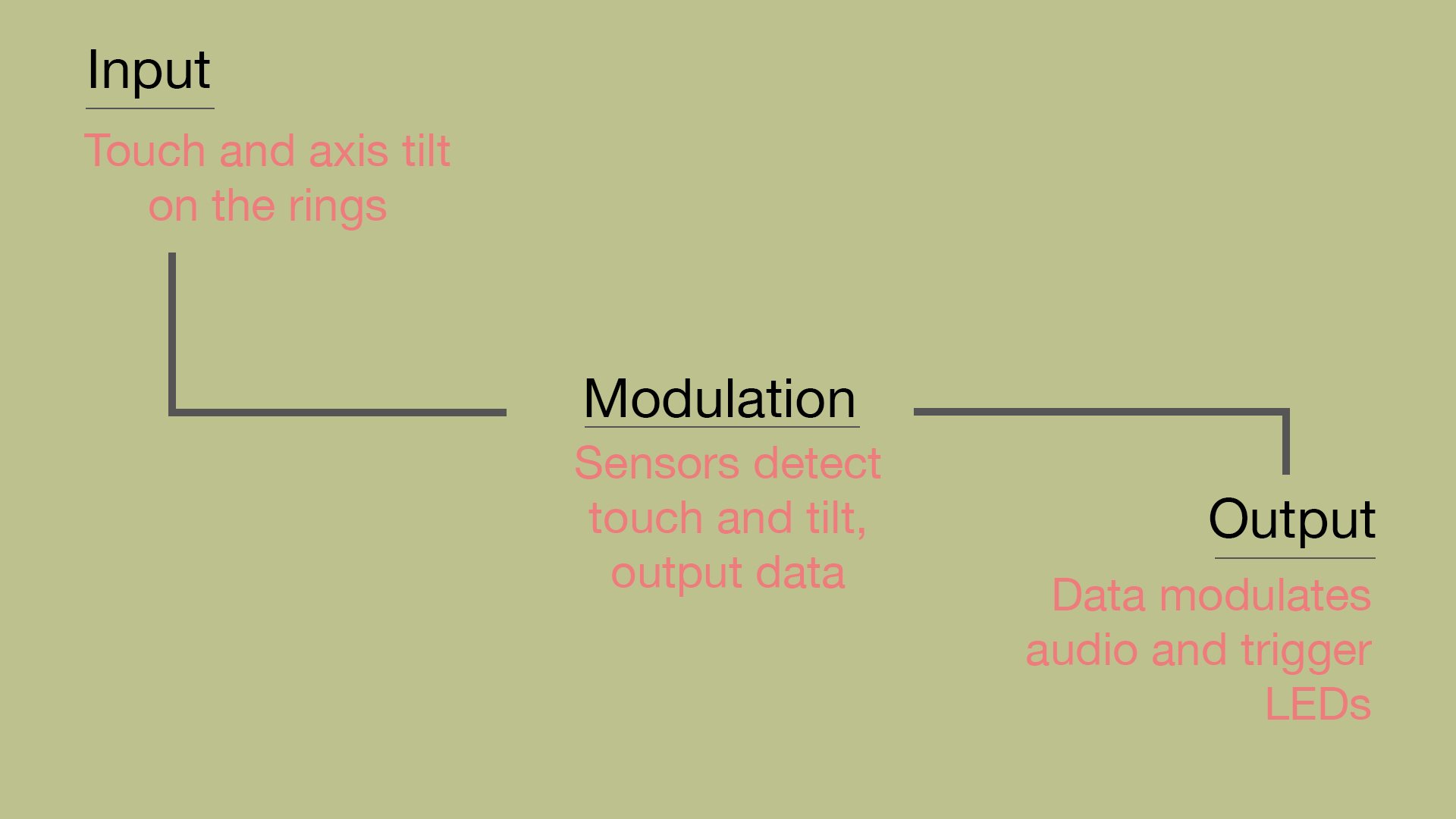-
- What did you learn from the process?
The body storming process encouraged me to rethink the ways in which my project could have been developed. From the minor things such as placement of contact mics to the overall presentation, the body storming process allowed me to envision a close-to-end product realization.
The body storming allows the closest participant to installation presentation and therefore I found it very useful. For me, I have a vivid imagination as to the end product. Therefore, the body storming process brings it down to the basics and ensure I find more flaws in whatever idea I have in mind.
- What surprised you while going through the process?
By having a 1-1 audience to system interaction, I could know first hand as to how an audience could react, purely from their faces/gestures and personal feedback. For instance, I had Kee Yong to be my tester. His reactions were of an initial confusion but also interest. Given the proper feedback, he navigated through the sonic installation quite well and showed mild interest.
I was honestly surprised as to how well it seemingly went. There were, however, a few faults in the entire layout. Namely the drawn-out waves that had him confused. I wasn’t sure how to replace the model as it is a simple representation of speaker+water ripples sculpture I am working on. Either way, upon going through the process — it seemed that he understood it and I felt quite surprised by it.
- How can you apply what you have discovered to the designing of your installation?
The body storming process allowed me to think through as to how an audience would actually react to the sonic installation. A few salient points were
- Ensuring that no echo feedback is picked up by the mic.
- Setting a time limit as to how long the audio can be recorded by the participant into the system
- Utilize a usable space, that ties in well to interstices — the project concept.
- Encouraging a more participatory experience, by creating a visually enticing interest.
- Allow a polyphonic experience of multi-mic inputs, for a more complete and complex experience.
Nonetheless, much of the feedback given was already ideas that I had tried to figure out / thought before. I was quite open to receiving new ideas but to me, I do feel quite confident with the final outcome of my current concept.
password: bodystorming

